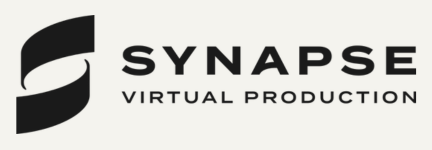
Meet the Career Chameleons: Strategy and Transformation

Above (left to right): Andy Woolard (EVP, strategy, Barkley OKRP), Ariba Jahan (head of transformation, North America, Anomaly), and Tara Finnegan (strategy director, Boys + Girls)
Ariba Jahan trained as a biomechanical engineer. You might wonder why she’s being spotlighted in an advertising trade publication.
She’s one of the industry’s ‘career chameleons’ LBB has spoken to as part of a series by the same name – today with a focus on strategy and transformation. From their stories of the road less travelled, we hope to gain a concrete understanding of how skillsets are evolving, and how fluid job paths might help advertising become more flexible and resilient.
Ariba has lived several lives. From biomechanics she moved into surgical research, then left for the world of product design, before pivoting to technology, product strategy, UX, and design innovation. That’s how she became Anomaly’s head of transformation, North America, in which role she blends creative vision and technology to help brands strategise.
For years, Ariba worried that her steps seemed like a series of unfocused, unconnected dots – but they’re what made her stronger. “Today, they're precisely why I bridge gaps often overlooked, translate between technical and creative spaces, experiment with new approaches and enjoy tackling unknowns. It also keeps me grounded in co-creation – I know the best solutions come when someone with a different lens is in the room.”
When you look closer, there is a guiding motivation that links each role. “I've always been drawn to systems,” Ariba explains, “how they function, where they break down, and how they can be redesigned to work for the people we want to serve.”
Andy Woolard’s winding career has been driven by a similar logic. He began as a journalist, but switched between copywriting, PR, planning, strategy and innovation, and brand identity on his path to becoming EVP, strategy, at BarkleyOKRP. Each move was spurred by a core passion: “Strategy’s my centre of gravity. It lets me explore adjacencies with confidence they serve my central offering.”
And they do serve his central offering. As he describes it, a strategist’s “superpower” is distilling a clear and effective plan of action down from a broad universe of perspectives – it makes sense that “the more you’re interested in, and the more career experiences you invest in, the more valuable your ideas.”
In Tara Finnegan’s opinion, more people beyond strategists can benefit from such a breadth of perspective. The strategy director at Boys + Girls joined the planning team twelve years into a relationship management career, eager to focus on the part she’d always enjoyed most: digging into brands, their perceptions, and how to propel them forward.
“Our industry is full of people who’ve changed lanes. And for good reason,” Tara begins. “To make bold work that actually lands, the whole team needs to get the client’s world: commercial pressures, stakeholder paths, practical constraints.” While genius creative ideas are exciting, they’re not born out of nowhere; truly effective ones stem from an agency-wide understanding and clear direction for the brand, Tara continues. “That’s why the best teams blur the lines. We need creatives who think strategically. Strategists who embrace creativity. And everyone, no matter their title, invested in the client relationship. The lanes may shift – but that’s often where the most exciting work begins.”
Andy acknowledges that making those leaps can be daunting or even scary; but each venture outside the comfort zone has been a “calculated risk” that’s kept him sharp, and accelerated his growth. After all, he suggests, “our job when it comes to our jobs is to accumulate as much context, capabilities, and experiences as possible, so we can do the job we have better.” Sometimes, that means coming back to familiar places, but returning doesn’t necessarily mean going backwards. “I’ve worked at BarkleyOKRP three times. Each time brought fresh opportunities, collaborators, and roles – all within a culture I know works.”
It’s a philosophy that applies beyond work. “Careers and life are a portfolio of experiments,” Ariba agrees. “You can wake up tomorrow and try something entirely new. How cool is that? In any moment, I can pull from my experience in designing surgical equipment or leading mental health research for underrepresented communities, applying that same rigor and human empathy to shaping truly meaningful products and experiences.
“As someone who genuinely enjoys learning, this is the best type of career to have.”















